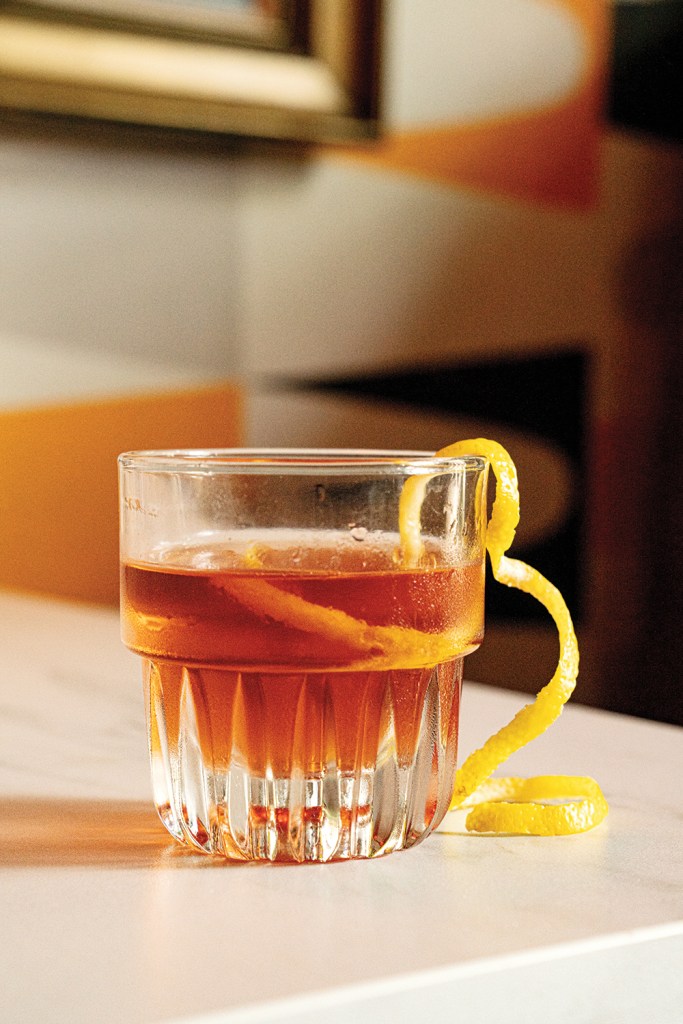Mixology: The Sazerac
A Cocktail Rich in History
Story by Molly Wellmann; Photography by Cary Norton
Ahhhh, the Sazerac cocktail, the official drink of New Orleans…what a drink, and what a history! It has stood the test of time, rolling with the ups and downs of the changing world and people’s changing tastes. Some have called it the first original cocktail, a “cocktail” being defined as a mixture of sugar, water, bitters, and spirit. While I don’t believe it’s the first, it shows up in the early 1800s, and there is written evidence of people drinking similar concoctions as far back as the late 1700s—telling the story of the Sazerac does require going back in time!
Let’s start in the 1790s on the island of Saint-Domingue. From 1791 to 1804, a slave rebellion solidified independence from Napoleonic French rule on what is now known as Haiti, while forcing a large number of wealthy French plantation owners to flee.
Antoine Amédée Peychaud was just a wee baby when his family abandoned their coffee plantation in 1804 and resettled in New Orleans. A.A. Peychaud grew up to become a pharmacist and opened an apothecary at 123 Royal Street in the 1830s. He was also an active member of the Concorde Blue Masons Lodge Fraternal Order, holding many titles including High Priest of the Royal Arch.
At his apothecary, Peychaud came up with a gentian-based bitters that some believe was inspired by his family’s Haitian nanny. Peychaud would mix a toddy of Cognac, a lump of sugar, and his special bitters in a small egg cup called a coquetier and serve it to his fellow Masons. The drink became very popular, not only as a medicinal remedy, but also as a great pick-me-up. Peychaud’s cocktail was soon being made in many of the coffee houses throughout New Orleans.
Enter: a man named Sewell Taylor. In the 1840s he opened one of the most popular coffee houses in New Orleans, the Merchant Exchange. (These were not Starbucks-type coffee houses. From the late 1700s through the mid-1800s, many saloons in America were veiled as coffee houses…but that’s a whole other story.) Taylor was also a liquor and wine merchant who brought in a number of products that became quite popular.
One such product was a Cognac made in Limoges, France, called Sazerac de Forge et Fils. Soon the cocktails being made with the singular smoky brandy had come to be known as Sazeracs.
By 1850, Sewell had moved his coffee house and opened a liquor store. Aaron Bird, and a little later, a partner, John Schiller, moved into the Merchant Exchange and changed the name of the establishment to The Sazerac House. (The Sazerac cocktail was so popular that there were several Sazerac Coffee Houses listed in 1850s New Orleans directories.) Schiller became the sole proprietor of The Sazerac House in 1860 and hired a man from Maryland named Thomas Handy, who had also been a clerk for Sewell Taylor in his merchant business. In 1869, Handy inherited The Sazerac House from John Schiller, along with $250,000 ($12 million in today’s dollars). And Peychaud closed his apothecary to manage The Sazerac House for Handy in 1870. By the next year, Handy had created the Thomas Handy Co., which specialized in wine and liquor; was the sole importer of Sazerac Cognac; and had purchased Peychaud Bitters.
It was under Thomas Handy’s ownership of The Sazerac House that the Sazerac recipe was changed. The Cognac was replaced with Maryland Club Rye, and a dash of absinthe was added. I think there were a few reasons for these changes. One, tastes in America had evolved. American rye whiskey was very popular, and there was plenty of it, especially in New Orleans. The Sazerac Cognac, along with other French wine, was getting harder to come by following the great French wine blight caused by the Phylloxera aphid. The addition of absinthe reflected a growing trend of making “fancy drinks” at America’s drinking establishments.
The Sazerac House closed before Prohibition, and Thomas Handy sold his company to a man named Christopher O’Reilly, who reorganized it into the Sazerac Co. This iteration of the Sazerac company eventually acquired the Buffalo Trace Distillery in Kentucky, which honors its owners’ history with the Thomas H. Handy Sazerac Rye and the Sazerac Rye 18-Year-Old in its annual Antique Collection release. The City of New Orleans proclaimed the Sazerac the official drink of New Orleans in 2018. Cheers to a wonderful old cocktail rich in history!

The Sazerac
- 2.5 ounces rye whiskey
- 1 sugar cube
- 2-3 dashes Peychaud’s bitters
- 2-3 dashes absinthe
Dash absinthe into an Old Fashioned glass. Swirl to coat the glass. In a mixing glass, drop in sugar cube and dash with bitters. Muddle. Add whiskey and ice. Stir to chill, and strain into absinthe-coated glass. Enjoy!





